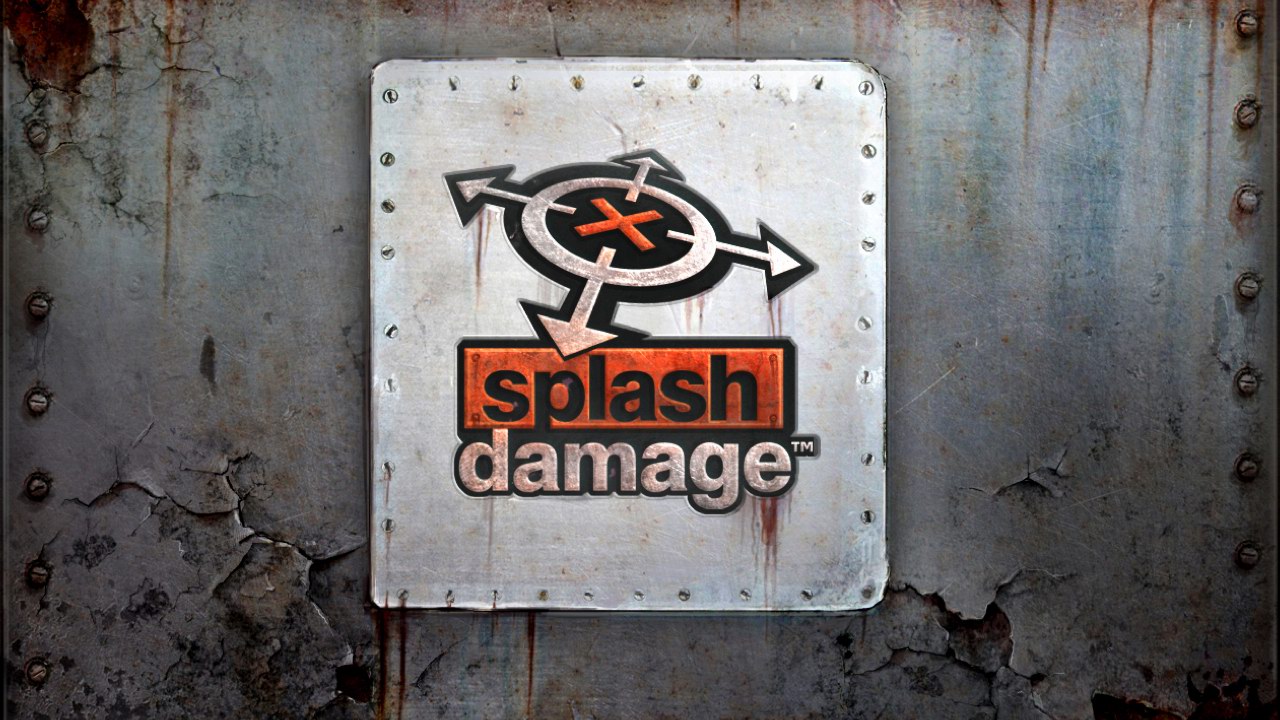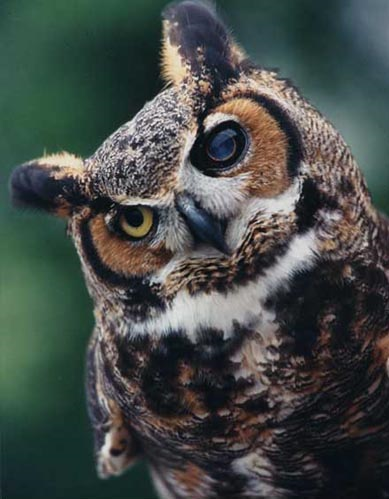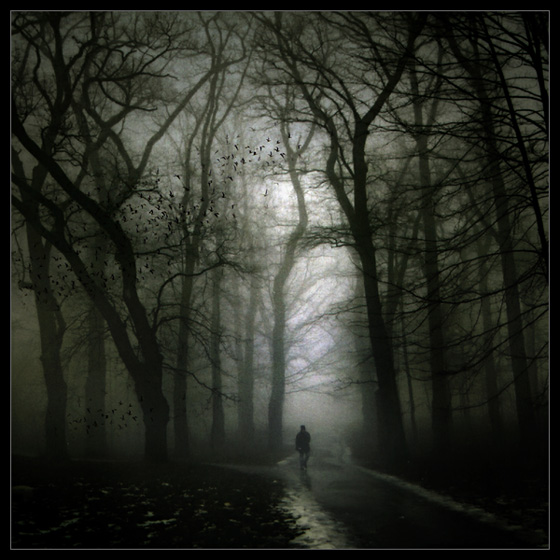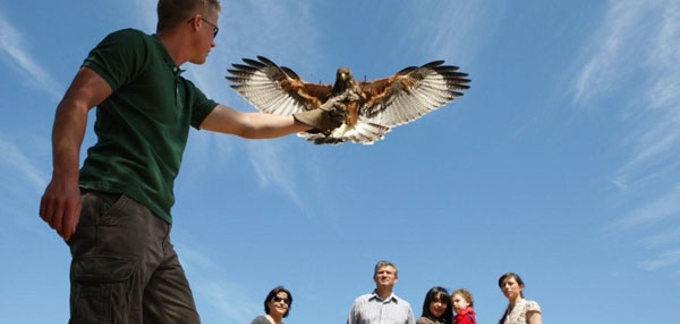A (Sort of) Interview About Sound & Games
So recently I got interviewed for the Splash Damage website, it kinda answers a few questions I get answered often so I thought I'd re post it here.
Andrew 'DingoBongo' Quinn
Sound Designer
Joining us, Up From The Depths, Thirty Stories High, Breathing Fire, His Head In The Sky (along with Quinzuuukiiii, his adorable younger, not-quite-able-to-fly sidekick) comes Andrew 'DingoBongo' Quinn. This is a - if you will - Quinntroduction to the man, the myth, the moo, the map. Due to territorial IP issues, not all of them may be visible to you, where you are, browing, reading this, facially.
Andrew is our sonic seer, our audio expert, our aural authority. He minutely inspects each and every sound with tiny pliers and rulers, ensuring they all have the correct bevel and camber and aroma. He finds them, creates them, nurtures and nourishes them in special bins, and then releases them from a brass bucket to flap about our heads. All the sounds issue forth from him. He is, if you like, a sort of sonic spigot, audio hose bibb, or sillcock of sound. He's about as far away as the distance between you and him. He's made from a carbon/carbon laminate, and stands 0.01 furlongs high. In his spare time he designs oats and carves votive busts of Hugo "Goodness Gracious" Grotius.
Things You Were Too Afraid To Ask...
Every once in a while, we interrogate one of our own and put their answers up for all the world to see. Read on to find out more about what Andrew does, how he ended up at Splash Damage, and more.
What do you do at Splash Damage?
I'm a Sound Designer which simply means that I design and implement the sounds that go into the game. Sometimes this includes music, too. In reality, it's a bit more complex than that. My job entails working with the Audio Director to define the audio style of the game, field recording, sound design, dialogue editing, music editing, creation and mixing of cut scenes, implementation of game assets, working with the Audio Programmer on features, and being a general audio ninja. (breathe)
Why did you want to work in the games industry and how did you get started?
I didn't really have a firm goal starting out that I wanted to work in games. The one thing I did know was that I wanted to work with audio. I spent a lot of my teenage years playing in and recording music with various bands, and engineering live music in my spare time, so the thought that I could turn it into a job really appealed.
I started off thinking I'd try my hand at being a recording engineer and went to Leeds Metropolitan University to study Creative Music and Sound Technology. During that degree I was introduced to a lot of different aspects of sound production, and I ended up gradually moving away from music and got really into post production (sound for film) which I still really enjoy. In the final year of that course I did a module in game audio and from then on I was hooked. I stayed on for another year at Leeds Met after my degree and did a masters in Sound and Music for Interactive Games. I started applying for jobs after the Masters and worked with a few mod teams and indie devs to gain a bit of experience and improve my portfolio. Whilst I was doing this, I was also doing a bit of lecturing at Leeds Metropolitan University, teaching on the same course I had done a couple of years previously. Finally, after a year and a half of working on my portfolio, lecturing and generally whoring myself out across the internet, I ended up in Bromley at Splash Damage.
Do you have any tips for people wanting to break in?
There's a lot of information on getting into sound design on the net so I won't re-tread well-worn ground here. Essentially make DesigningSound.org your homepage and hang aroundSocialSoundDesign.com.
As for game audio, break in by doing! Join a mod or indie team and create some sounds, hang around places like GameAudioForum.com, read GameAudioRelevance.iasig.org and listen to the GameAudioPodcast.com. Create a demo reel of work you're happy with, then send it off to as many people who will take it.
Any more than that you'd have to contact me directly - I'm happy to give out a bit of advice.
What other games have you worked on?
I worked on a couple of small mods, a big screen game for BBC Leeds staring a small robot called Fuse Box, an indie game called Primal Carnage and more interestingly a book; an interactive tutorial about game audio delivered in a game called The Game Audio Tutorial (available in all good bookshops). Oh and a tiny ennie weeeeinne bit of BRINK.
Which of your past projects was your favourite to work on, and why?
It has to be The Game Audio Tutorial. It was a really interesting project to work on because it was a bit unusual. The authors (Richard Stevens and Dave Raybould) pretty much gave me carte blanche to do what I wanted with the sound, however there was a restriction for various legal reasons I wasn't allowed to use any commercial sound effects libraries. What this meant was that I pretty much had to go record everything required for the project with next to no budget. This forced me to think in ingenious ways to get the material.
For instance, one of the requirements were some sounds for night birds, owls etc. So one night I went off to a wood near my parents' house in Cumbria in the middle of nowhere to try and record some. I don't know if you've ever sat in a wood in the middle of nowhere, at 1 AM, in the dark, for an hour. I found it pretty terrifying. The more annoying thing about that experience was that I didn't manage to record any night birds. So it was back to the drawing board. In the end, I decided to have a go at listening to real recordings of owls and night birds and then record myself trying vocalize the calls. It kinda worked and made it into the book - see/hear for yourself here. Coming up with little solutions like that and having to beg/borrow/steal stuff to make sounds rather than falling back to traditional library fx was really rewarding.
Why did you join Splash Damage?
The games, environment, location and more importantly people all agreed with me.
What is it like to work at Splash Damage?
No one day is quite the same; there's always something new and exciting to do, whether that be creating a new sound for some new game asset or making clever little audio systems to make the sound playback in the game. Oh and there's a never ending supply of cake...
What are the best and worst parts of your job?
Best Part: Recording, editing and designing that perfect sound that fits just right and seamlessly works in the game
Worst Part: Editing dialog line 15,729
What was your first gaming experience?
I can't really remember what my first gaming experience was, it was probably something on a friend's Mega Drive. I do however remember the first game I ever owned. When my parents bought their first PC they bought me a game for it out of curiosity called Cosmo's Cosmic Adventure. Essentially it was a side scrolling platformer about a little green alien with plungers for hands. I never got off the second level. So it wasn't a great start on my transcendence into becoming a game developer. Shortly after that I was given the demo for Wolfenstein 3D which changed everything for me and I've been shooting things (virtually) ever since.
What types of games do you like, and what's your favourite game of all time?
Typically I'm a bit of an FPS nut, so I've put many hours into your Call-of-Battlefield-Honor-Fortress-Strike-Tournament-7 type action games but I like to branch out into the odd RPG or RTS now and then. Hell, recently I've even been venturing into the cuddly world of indie games and really enjoying it.
As for a favourite game of all time, that's a difficult one. Does "everything Valve has ever made" count as an answer? If I had to pick one it would have to be the original Half-Life. It's probably not the best game Valve have made but for the sheer impact it had on me and the amount of time I put into it it's got to be that game.
What do you enjoy doing when you're not at work?
Mountain biking, skiing, movies, other miscellaneous sports and social stuff and sometimes even playing the odd game.
What's the meaning behind your nickname?
DingoBongo was just a name I started using years ago when playing the original Counterstrike and it kind of stuck. I can't really remember how I came up with it. I think I just stuck two random words together that kind of sounded similar, like some sort of jokey radio call-sign off Top Gun or Hotshots. I find it really annoying that I don't have the DingoBongo Xbox Live tag because I was too late to the party!
via Splash Damage
Christmas Come Early: Testing A Sony D-50
 Just recently I have bought myself a Sony D-50 handheld recorder for grabbing quick sounds and carrying about when the FR-2 and blimp are a little inconvenient. One of the features that really sold this to me over the others available, was the ability to do both X/Y and 120° AB mic positioning*, which would mean that it would be great (in theory) for recording quick spot fx, ambiences and impulse responses.
Just recently I have bought myself a Sony D-50 handheld recorder for grabbing quick sounds and carrying about when the FR-2 and blimp are a little inconvenient. One of the features that really sold this to me over the others available, was the ability to do both X/Y and 120° AB mic positioning*, which would mean that it would be great (in theory) for recording quick spot fx, ambiences and impulse responses.
So here's two things that I recorded today which otherwise probably would have been missed;
Recorded @ 96k 24bit Sony D-50 Internal Mics X/Y
Recorded @ 96k 24bit Sony D-50 Internal Mics AB
Finally if you're possibly wondering why there haven't been that many Game Audio Tutorial recording posts recently, it's because I've been implementing all these sounds into the UDK.
*EDIT I originally stated that the second D50 mic position was ORTF this was incorrect (thanks Jed of JedSound) you can read about ORTF mic positioning here;
Fireworks
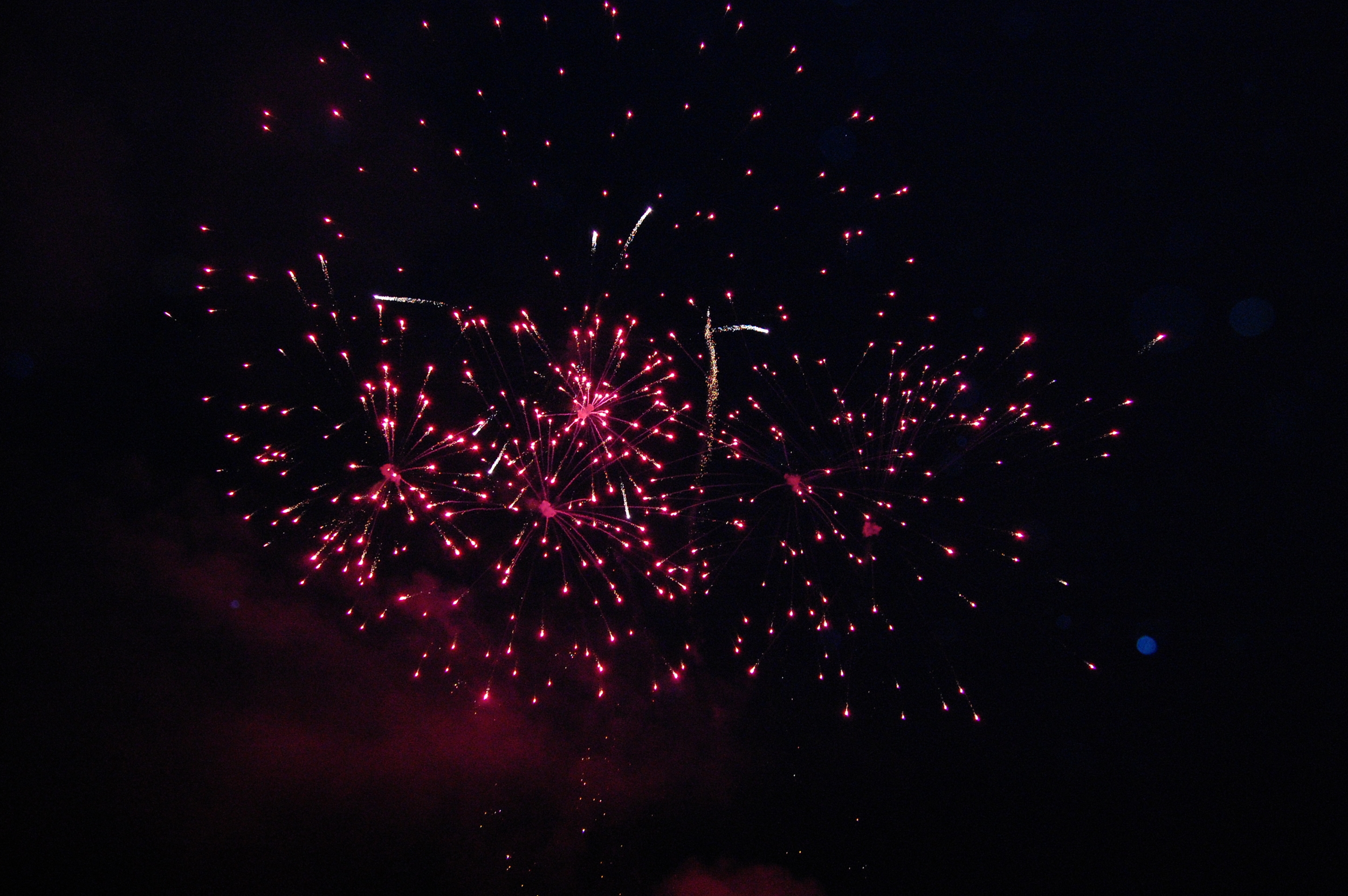 It's the time of year again when us Brits celebrate the failed plot to blow up the Houses of Parliament by blowing stuff up. So as usual I set out with my recorder to try and record some of this pyrotechnical mayhem. After a bit of advice from Chris Sweetman I decided to set up a few hundred feet away from the fireworks and people using a shotgun mic and tried to capture some of the reflection of the bang as well as the bang. I ended up with some good stuff and some bad stuff, quick selection of highlights below.
Recorded @ 192k/24bit with a Rode NTG-3 and a Fostex FR-2
It's the time of year again when us Brits celebrate the failed plot to blow up the Houses of Parliament by blowing stuff up. So as usual I set out with my recorder to try and record some of this pyrotechnical mayhem. After a bit of advice from Chris Sweetman I decided to set up a few hundred feet away from the fireworks and people using a shotgun mic and tried to capture some of the reflection of the bang as well as the bang. I ended up with some good stuff and some bad stuff, quick selection of highlights below.
Recorded @ 192k/24bit with a Rode NTG-3 and a Fostex FR-2
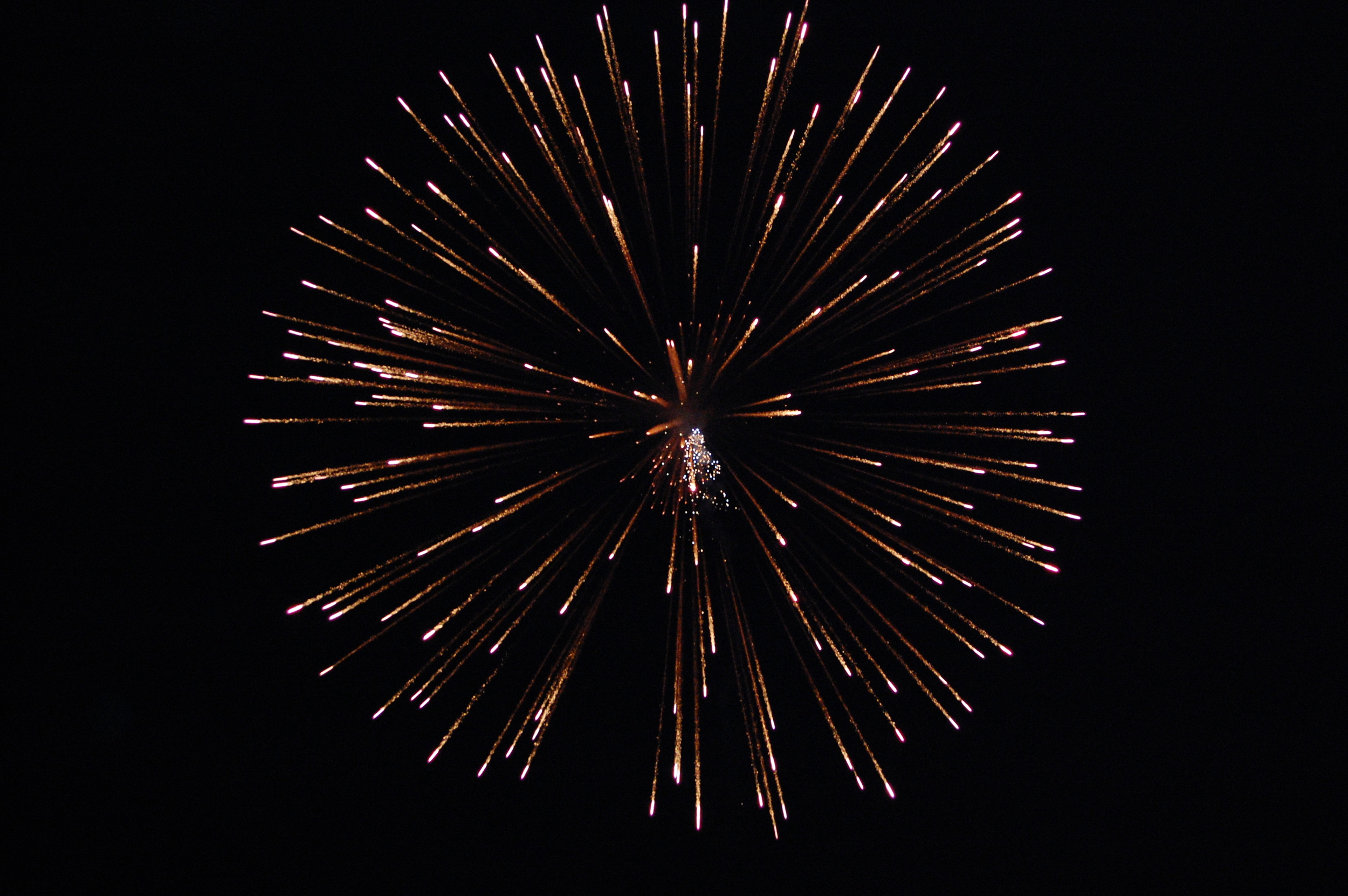 I encountered a few problems with recording fireworks that hopefully I'll be more prepared for next year;
I encountered a few problems with recording fireworks that hopefully I'll be more prepared for next year;
- Fireworks are LOUD, this may seem obvious but they are. On some of the larger fireworks the pre-amp on my FR-2 was clipping with the pre-amp trim at its lowest level. (time to invest in some in line pads)
- Be reaaalllyyy far from the crowd. I thought I'd be far enough away from the crowd but I wasn't, the more eagle eared of you lot will also notice a dog bark on one of the recordings. This was due to a terrified Labrador running round the field I was in. Who takes a dog to a fireworks display?
- There's no indication when the fireworks are going to start so if you have it have Pre-Record on and be ready.
So as usual its the general public that run everything! Don't they know we're trying to record sound. If only it was this easy to shut everybody up.....
Thanks to Charlotte for taking the pretty firework pictures.
GAT Owls, Night Birds and The Human Voice
The owls & night birds in The Game Audio Tutorial have a bit of a strange back story to them and id thought i'd make this post about them and the problems they incurred.
As you can glean from the title of the post I needed to record some owl and night bird vocals for The Game Audio Tutorial and for various reasons to do with the book I couldn't use any library recordings.
Phase1: Record birds in their natural habitat
So I went on a local nature website to try find out where these critters live. After picking a couple of locations that I could visit all in one evening I set out with my usual combo of an FR-2 and a Rode NTG-3 to try record some of these birds.
Unfortunately none of the birds seemed to be in, or if they were in they definitely didn't come out to play. All I managed to record whilst sat in a scary-ass wood on my own in the dark in the middle of the Lake District was the rustle of trees and possibly the quiet approach of the local axe murderer. (although that could have been a rabbit or a fox for all I know it could have been an elephant)
Phase 2: Record reserve birds
Luckily there is a falconry centre close to me which houses a couple of owls and other birds of prey which would be great to record. So I gave them a ring to see if they'd be interested in taking pity on a lowly penniless sound designer and let me come and record some of their birds. They agreed to letting me record the birds but unfortunately they wanted a quite substantial fee for doing this, which is fair enough really as I'd be taking up an afternoon of the centre's time. However the budget I have for the Game Audio Tutorial doesn't quite stretch to this (it's zero, nill, nadda,) so I had to go back to the drawing board. Again.
(on a side note when I'm not so penniless I'm going to go back and take them up on this offer)
Phase 3 : Desperation
The last idea I had (apart from going out and sitting in a forest all evening again) was to get some recordings of night birds like owls and the such and to try to mimic them with my voice then pitch the recording to a frequency that sounds realistic enough to be an owl. So I recorded myself mimicking owl noises and pitching them to create bird like sounds.
It sorta works. You could almost say that the human and slightly unrealistic quality to the vocalisations gives them an eerie and unworldly tone. If I claimed that this was intentional I'd be lying.
And this neatly brings me on to the point or moral or theme or end bit (running out if ideas now) of this post.
The human voice is pretty versatile, it can be used to produce a range of vocalisations for all sorts of applications. For instance if I'm trying to describe a sound to someone and struggling to do it often i'l vocalise it to try and get my point across. Or if I'm struggling to create or record a sound I'll have a go at vocalising it to see if that works, I've lost count of the times that someone has come across me making noises to myself then wandered off again totally bemused. Some may argue that a sound designer's voice is one of their best tools and I'd agree. So now I've made this bold claim here's a couple of videos and examples of the human voice being used in real-life sound design by real-life sound designers!
Dragon Age Origins: 0:50 Jordan Ivey uses the sound of a human imitating a cat in the Deepstalker creature.
Star Wars: R2D2
Star Wars contains tons of vocal performances by both Ben Burt personally and other sound designers arguably one of the most iconic being the voice of R2D2.
This excerpt was taken from the book The Sound Of Star Wars it is excellent and I suggest that everyone vaguely interested in sound to go buy it.
Over a period of months, R2's voice became a fifty-fifty meticulous blend of electronic and human sound. Eventually Burtt built a circuit using the ARP 2600 that enabled him to play notes on a synthesiser and at the same time record human sounds into a microphone; For example, if Burtt raised his voice in pitch, the electronic sound would shape itself to conform. Burtt would make the sounds as if in slow motion and then speed up the result, which created the rapid high-pitched sound of the droid's speech.
"Artoo hs a scream, which is just me screaming" say Burtt. "I did the scream up at Park Way in the basement where I worked. I remember I was lying on the floor under the workbench table because it was the quietest place in the room; it would insulate me somewhat, because it had a filling cabinet on either side of it. Later, I sped up my scream a little bit, so it's higher in pitch. But it's funny-I've tried to repeat that scream over the years, and I've never been able to hit that note again without coughing or something."
To finish I'll leave you with this as a rather extreme example of what can be done. A complete replacement of all the Half-Life 2 audio with vocal samples (I didn't create this btw). Enjoy
So get vocalising!
GAT Bullet-Bys
Again slowly but surely i'l be blogging about some of the more interesting sound design elements being created for the Game Audio Tutorial. These posts are being added to the blog as I get to it rather than in any particular order.

These bullet-bys were created by putting several different vehicles recordings through Waves Doppler and then pitched up between 20 and 40 semi-tones. The original vehicle recordings were of cars, planes trains and a motorboat.
Tyre Textures
WARNING: This post starts off well and then ends on a bit of an Indiana Jones based tangent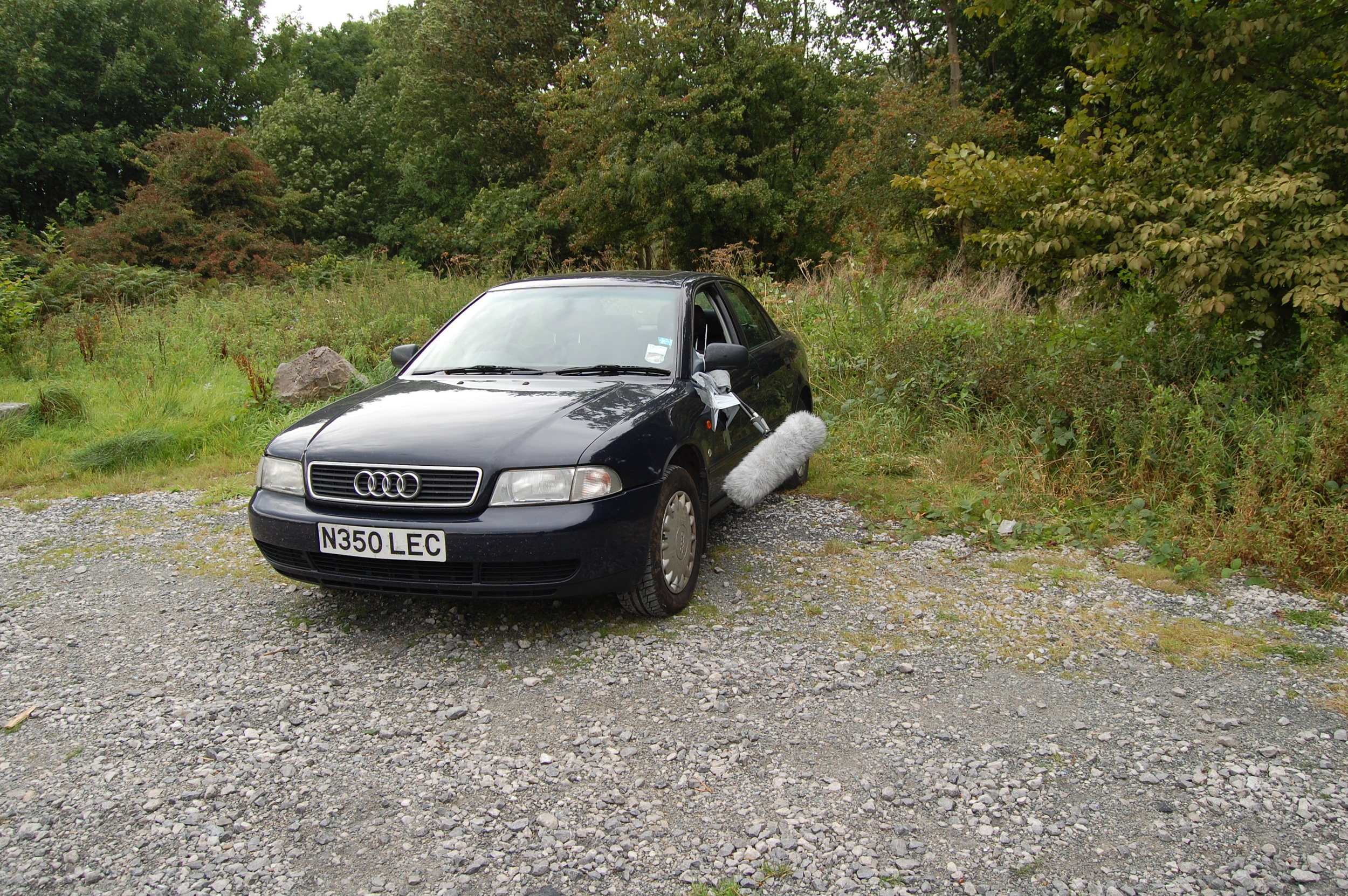
Currently I'm working on a book which will be available next year called The Game Audio Tutorial. The book is going to be a guide to all things game audio and features some examples of car audio. For this I needed to create a selection of short loops to be played when the vehicle travels over different surface types.
Setup was pretty simple, I took the boom arm off a mic stand and mounted it between the wingmirror and window with an old towel zip-ties and duct tape.
Here's a couple of examples of what I recorded;
Recorded at 192k 24bit with a Rode NTG-3 and a Fostex FR-2
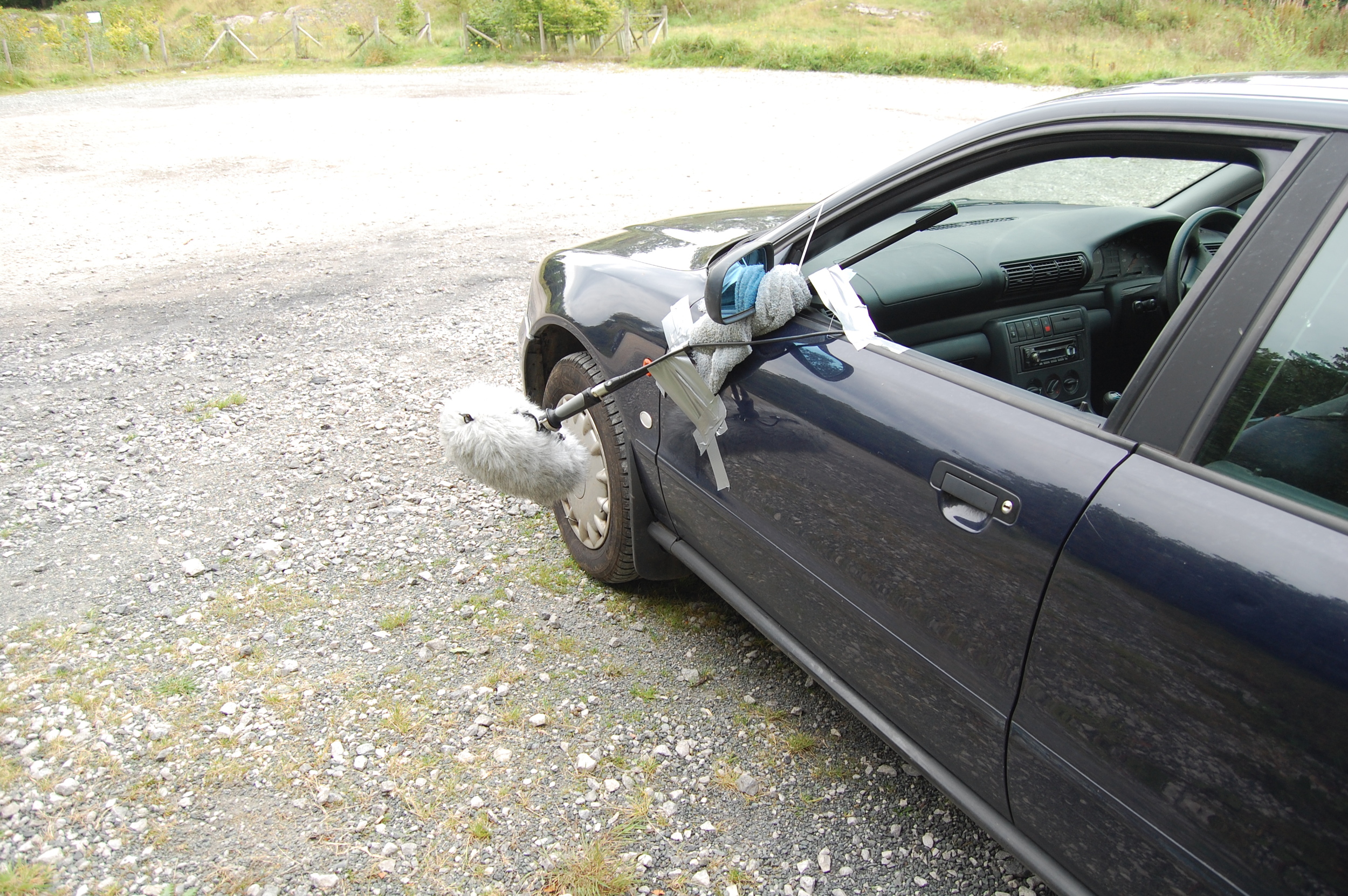 Recording this is relatively simple either get up to speed or start on top of a hill (best method) switch off engine and roll down trying to maintain a constant speed.
Recording this is relatively simple either get up to speed or start on top of a hill (best method) switch off engine and roll down trying to maintain a constant speed.
Couple of safety tips;
- Switching off the engine in most cars disables power steering and makes the brakes really heavy so make sure the area you are in has plenty of run off and is fairly straight.
- I imagine the police would take a dim view of you doing this if they caught you so either find a private road or a really really quiet one.
- Make sure the mic is strapped on properly I wouldn't fancy running it over or leaving it in the middle of the road for someone else to run over.
Quick Editing Tip;
The recording setup above and other D.I.Y. stuff I have done can produce results that won't loop properly as there can be slight modulations in the pitch or speed of the car.
To make them loop I have been using a quick little trick.
- Edit a section as normal trying to keep the loop as regular as possible and make it a little bit longer than necessary.
- Export selection to new file.
- Split the new file in to two separate waves around the midway point at a zero crossing.
- Take the second half and move it to the beginning of the loop then move the first half to the end of the loop.
- Now cross fade the two files.
- You now have a file which may modulate but will perfectly loop.
Couldn't really talk about this without mentioning one of the great uses of this; (3:50) The giant boulder that chases after Indiana Jones at the start of the film was made of fiberglass. On the Bonus Features DVD, sound designer Ben Burtt said that in order to get the proper sound effects for the giant boulder, he and the sound crew tried pushing boulders down a hill, but the sounds they were getting weren't up to par with what they were looking for, and later that day, as they were leaving in a Honda Civic that they coasted down a gravel embankment, Burtt noticed that the sound was just what they were looking for, so he grabbed a microphone and held it near one of the Civic's rear tires to record the effect.
I was looking for a video example of this and came across a two part sound design feature on the Indiana Jones films so here they are in their entirety;
Pigs are Awesome
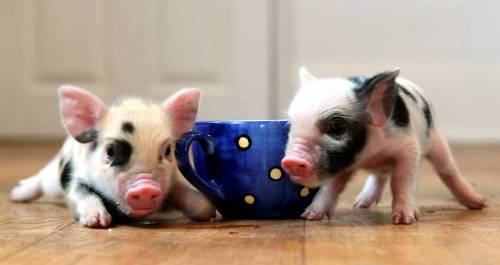 Pigs are awesome. Not only do they provide three of the best foods (bacon, sausages and chops. Sorry veggies) and fit neatly into teacups they are also the basis for some of the best sound effects and creature sounds.
Pigs are awesome. Not only do they provide three of the best foods (bacon, sausages and chops. Sorry veggies) and fit neatly into teacups they are also the basis for some of the best sound effects and creature sounds.
Pigs have been used in tons of films and games for creatures and sweeteners to other sound effects. There have been hundreds of uses of squeals, grunts and roars but in this post I'm only going to example two, Aliens and Backdraft. In Aliens (1986) pig squeals are used as a large component of the Aliens vocals.
Check out their use in Aliens;
In Backdraft Gary Rydstrom used pigs and other animal vocals including snakes and lions to give the fire a character and to make it sound more aggressive. This wasn't the first (or the last) use of animals in effects like this but the film is a pretty good showcase of the technique.
Use In Backdraft 4:12 (I know its not a pig but Its the only decent example I could find on YouTube)
With this sort of use in mind and a spot on my Game Audio Tutorial To-Do List with "Creature Effects" listed I organized to go and record some pigs. After talking with the owner I found out that they are most vocal just before they are fed and hate being picked up. So we left them un fed for an hour later than usual and waded in with the recorder. I quickly found out that to get a decent recording of the piglets squealing I needed to get away from the sows when picking the piglets up, as they objected to this quite loudly, as any good mother would. This wasn't quite as easy as you'd think as the sows weigh about 600 pounds and will only move where they want to and the piglets (more small pig than piglet at this stage) weren't exactly light. Overall I managed to get some good recordings out of the trip some examples are bellow;

Recorded at 192k with a Rode NTG-3 and a Fostex FR-2
Thanks to Sheilah and Ruben Lord for helping out and letting me come record .
Waves & Trains
Whilst I was down in Brighton for develop I decided to go record some waves.
Here's a couple of examples of what I got, all recorded @ 24bit/96k NTG-3 into a Fostex FR-2
The first file is a mix of two perspectives; Perspective 1: Pointing towards the sea picking up large wave movements Perspective 2: Stood in the sea facing the shore picking up the wave breaking
I also wanted to try and record some waves on the breakwater in the marina so I walked down there from the hotel to find it closed because of the rough sea. However some nice fishermen with a huge dog let me in. I ended up getting very wet but also getting some very nice angry sea sounds.
As I was walking back one of these appeared round the corner. Perfect case and point of always being ready to record or I wouldn't have got this.
Bows and Arrows
Today I managed to get an hour of time with an ex-national archery champ Dave Carter to record a few bow and arrow sounds. I managed to get some good material of him loading arrows, arrow impacts and firing, but not of arrow pass by's. The arrows we were using were cutting too cleaner path through the air and were making almost no sound at all. Experimentation with broken arrows and arrows with things attached is needed in the future, when I can possibly have a bit more of his time.
In the meantime here is an example of some of the sounds I managed to get; Recorded @ 24bit/96k Rode NTG-3 into Fostex FR-2
Thanks to Dave for helping out.
Editing Birds for Non-Repeating Ambiences
This week I went out to record some bird calls for a non-repeating game ambience. This proved to be slightly problematic for two reasons. 1. Birds rarely stay still and are generally found in tall trees. 2. Birds are fairly quiet compared to ambient noise.
Here is an example of what I managed to record at the woods.
Recorded at 96k/24bit with a Rode NTG-3 and a Fostex FR-2
As you can hear the bird call is masked by a lot of background noise and is quite quiet. To be used in a non-repeating ambience the call needs to be as clean as possible so that it can be randomly triggered without affecting the looping background.
So the next step was to EQ out the background road noise, I did this using auditions parametric EQ, using a high pass filter with a cut-off frequency of 333hz.
The call is allot clearer now but is really quiet so I normalized this sound to -0.1db
The process of normalizing the sound has brought up the noise floor considerably. So this needs to be removed from the call. I did this using the hiss removal process in audition. In some cases I had put the calls through the hiss removal process twice to completely remove the noise, although one pass did the trick 99% of the time.
Nice clear noise-free single bird calls ready to be put into a non-repeating ambience.
Hemotite Hard Drive
There have been a lot of interesting sound design / recording posts recently from a variety of different reording blogs. There were two I really wanted to try for myself Hematite Magnets a la Erik Aadal (the shares and stock in these must have risen considerably since Erik's post) and a Hard Drive. I won't explain much about these as these two sources will do a much better job;
Noise Jockey: Hard Drive Guts
Erik Aadal: Hematite Magnets
(Thanks for the inspiration!)
Having acquired some hematite magnets and a hard drive I set about recording both of them .... separately. I won't post the results here as if you have read the links above you will know what it will sound like.
Then I came up with an idea. Now like most people I have been told that putting strong magnets near electronics was bad, so with great abandon I started putting the magnets near and on the spinning hard drive.
What happened next was quite interesting.
Instead of exploding or electrocuting me the magnets created resistance on the spinning metal plate and slowed it down giving me control over the sound/pitch of the spinning hard drive.
New Website = Consolidated Online Presence
I have re-done my website to try and integrate all my online ramblings into one area.So here it is; www.aquinn.co.uk This layout is easier to update and finally works on the iphone/ipad.
Smash Smash Bang Bang - The Day I Destroyed A Car
Recently a friend decided she was scrapping her car, i managed to persuade her that letting me record the sound of it being smashed into several pieces would be a good send off for the old girl. I got in contact with the local scrapyard who were happy for us to destroy the car on their premises if they got the remains.
 For this excursion i brought a long my old friend and fellow sound designer Matthew Denman who assited on both the recording and the smashing.
I took my usual set up of a Fostex FR2 and a Rode Ntg-3 with the addition of a borrowed Ntg-2 and a bag of various tools and bits of wood.
For this excursion i brought a long my old friend and fellow sound designer Matthew Denman who assited on both the recording and the smashing.
I took my usual set up of a Fostex FR2 and a Rode Ntg-3 with the addition of a borrowed Ntg-2 and a bag of various tools and bits of wood.
One thing i hadn't counted on was how hard it is to smash a car window if you don't know what you're doing. It took a while to work out that the weak spot is right where the glass meets the frame.
 We recorded everything from various bodywork impacts/scrapes to the breaking of all the windows/lights.
We recorded everything from various bodywork impacts/scrapes to the breaking of all the windows/lights.
 One saftey tip to remember for the future is that when the windshield is cracked any other impacts or movement of it causes tiny glass fragments to fly everywhere so goggles are a must. I would also advise a face mask as well as the fragments are so small it would be easy to breathe them in.
One saftey tip to remember for the future is that when the windshield is cracked any other impacts or movement of it causes tiny glass fragments to fly everywhere so goggles are a must. I would also advise a face mask as well as the fragments are so small it would be easy to breathe them in.
 Everything was recorded at 96k/24bit and we came out with some nice results, a particular favorite was the sound of a wheel being thrown through the allready broken/cracked window.
Everything was recorded at 96k/24bit and we came out with some nice results, a particular favorite was the sound of a wheel being thrown through the allready broken/cracked window.
A layered hit made from some of the recordings we made;
Recording Cars
As described in a previous post im currently working on an independant game, the game features a jeep and motorcross bike as two playable vehicles. As a bit of a test to see the results i could get i went out and recorded my 13 year old Audi A4. Il be using some more suitable vehicles for the game. After reading some tips on recording cars from Tim Prebble's exelent blog (Shamless Plug--> The Music Of Sound) I decided to use two dynamic microphones, a Shure SM57 and a Shure SM58 Beta. I covered both of these in a condom and then wrapped them in two old tea towels to reduce vibration.
Word of warning! don't use lubricated condoms, (as i did initially) as you end up with slightly lubed microphones. I can't yet see the advantage of having a lubricated microphone, unless you're trying to insert it into someone.....
I placed the SM57 in the engine bay pointing diagonally at the engine, initially i had the cable routed through the passenger side window but this left the mic cable running right past the battery which introduced some interesting interference. So instead i routed the cable through the driver side window and taped it over the dashboard.
The SM58 was put over the exhaust and the cable was routed over the boot and in through the rear passenger window.


